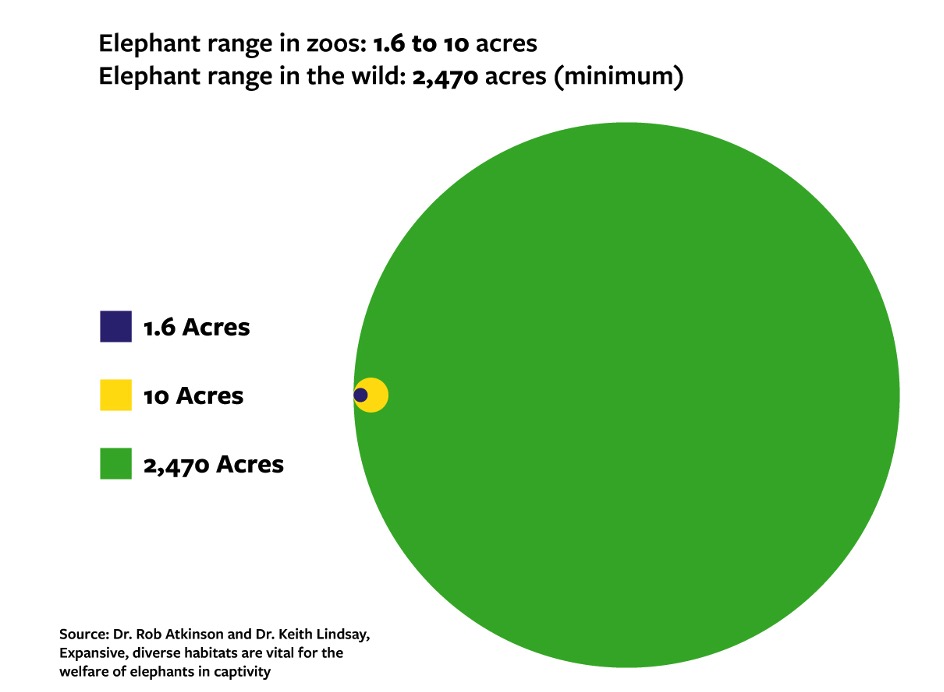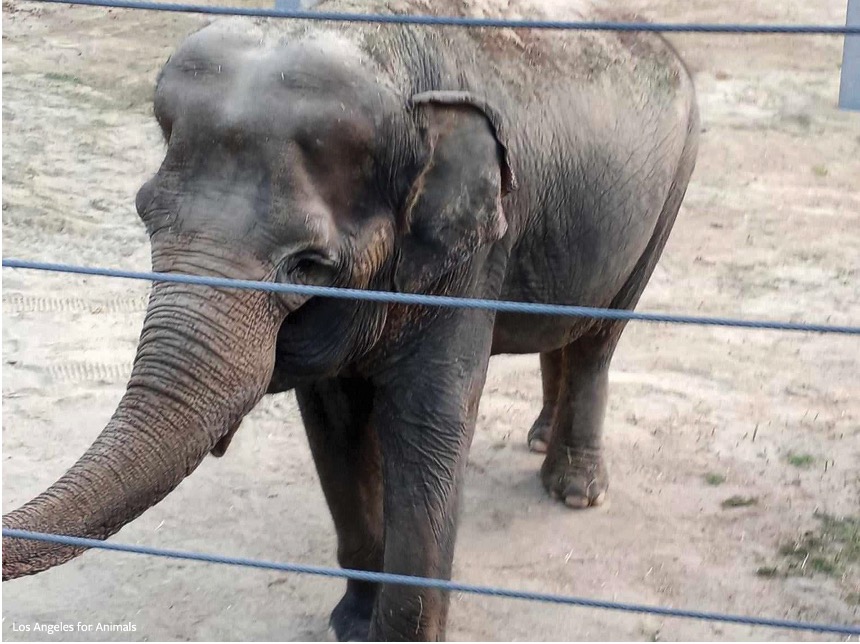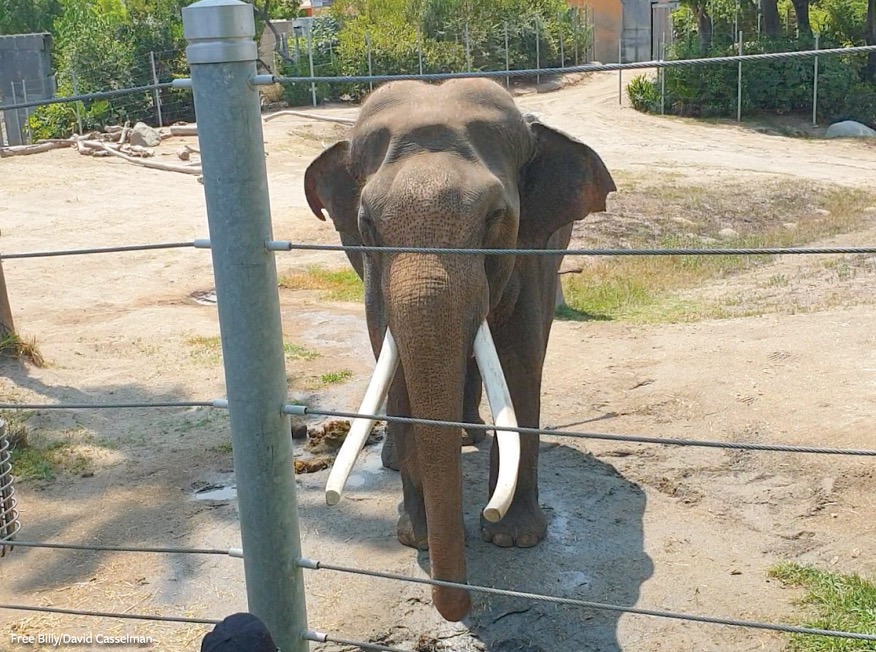Comments
ANIMAL WATCH - In Defense of Animals is celebrating the arrival of Osh the African elephant at The Elephant Sanctuary in Tennessee, a pivotal moment not just for Oakland Zoo, but for all zoos housing elephants. Oakland Zoo’s decision to send Osh to a sanctuary reflects its admission that even its large 6.5-acre enclosure cannot provide enough space or socialization for elephants. The bold move praised by In Defense of Animals — known for its annual 10 Worst Zoos for Elephants list — raises the bar for animal welfare and increases pressure on other zoos, including the Los Angeles Zoo, to follow suit and close their elephant exhibit.
Oakland Zoo stated, “We currently cannot provide the optimal care and space for multi-generational herds that would meet the welfare and social needs required for elephants.” Speaking to ABC 7 News, a representative added, “this space is not enough for the elephants’ social complexity that we think is necessary.”
While no zoo can fully meet elephants’ needs, Oakland Zoo’s statement is remarkable because it is only the second U.S. zoo to concede that its comparatively massive 6.5-acre exhibit is not enough room for the world’s largest land mammals. Extreme lack of space was highlighted in the 2022 list of the 10 Worst Zoos for Elephants, which underscored that even the largest zoo enclosures cover less than 1 percent of elephants’ natural range, and cited Dr. Rob Atkinson and Dr. Keith Lindsay’s study, “Expansive, diverse habitats are vital to the welfare of elephants in captivity” which shows that zoo enclosures cannot meet the complex needs of elephants.

“Oakland Zoo stands out for its honesty and commitment to animal well-being,” said Dr. Marilyn Kroplick. “Osh’s release to sanctuary marks a watershed moment in the evolution of zoos, and a dawning of the next generation of more compassionate, elephant-free zoos that embrace modern scientific understanding, seek to engage rather than entertain, and prioritize animals over profit.”
Detroit Zoo is the first and only other zoo to date to admit it did not have sufficient space for elephants. In 2004, it sent its two elephants, Winky and Wanda, to sanctuary — a decision that initially cost the zoo its accreditation when the Association of Zoos & Aquariums (AZA), removed Detroit Zoo’s accreditation, though it was later reinstated.
”We had been working for years constantly increasing the size of the elephants’ area,” said Ron L. Kagan, speaking at the time as Executive Director and Chief Executive Officer at Detroit Zoo. “Every time we made those improvements that we thought were important, we then thought, from an elephant's point of view, it was not.”
Courtney Scott, Elephant Consultant for In Defense of Animals explained, “The vast majority of elephant enclosures are not even 1% of their smallest home range, which is 2,470 acres. Elephants need vast landscapes to roam, forage, explore new territory, and find places to retreat from conflicts or when they don’t want company. These activities are vital for their mental and physical health. Zoos fail elephants largely by lack of vast roaming spaces, making elephants age faster and die at half the age of their wild counterparts.”
Oakland Zoo is now the 41st zoo in the U.S. to close or pledge to close its elephant exhibit. The move follows years of campaigning by In Defense of Animals to raise awareness about how elephants suffer in captivity and puts mounting pressure on the Los Angeles Zoo to join Oakland Zoo and five other major California zoos that stopped displaying elephants, including Sacramento Zoo, Santa Barbara Zoo, Monterey Zoo, San Francisco Zoo, and Six Flags Discovery Kingdom in Vallejo.

Los Angeles Zoo has divided just 3.5 acres into three separate yards for elephants Billy and Tina. Photo: In Defense of Animals
At the Los Angeles Zoo, Billy and Tina continue to show signs of zoochosis — each bobbing and swaying in their own desolate, tiny yard. Billy has recently been documented reaching through electrified wires in a desperate attempt to reach plants, while Tina suffers from arthritis and joint pain caused by hard surfaces and lack of space. While the zoo expanded the elephant exhibit to 6.2 acres in 2010, just 3.5 acres are for the elephants which is further divided into one acre or fewer yards where Tina and Billy live their separate isolated lives. Billy has endured nearly four decades at the zoo, and Tina arrived in 2010 after spending 30 years in a circus.

Tina has suffered in solitude for years in a tiny, deficient exhibit at the Los Angeles Zoo. Photo: Los Angeles for Animals
Tragically, their companions Jewel and Shaunzi died from captivity-related diseases within a year of each other — Jewel in January 2023 and Shaunzi in January 2024.
 Calls to free Billy from Los Angeles have intensified following Oakland Zoo’s decision to send Osh to a sanctuary because of lack of space in a much larger exhibit. Photo: Free Billy/David Casselman
Calls to free Billy from Los Angeles have intensified following Oakland Zoo’s decision to send Osh to a sanctuary because of lack of space in a much larger exhibit. Photo: Free Billy/David Casselman
Billy and Tina deserve retirement in a sanctuary designed with their needs in mind: vast acres to roam, trees, grass, ponds, and hills in a quiet natural environment, far from the congested and noisy life in the Los Angeles Zoo.
The Los Angeles Zoo is being urged to acknowledge that its vastly undersized exhibit is failing Billy and Tina, and become the seventh California zoo to close its elephant exhibit and send its elephants to a spacious sanctuary.
(In Defense of Animals is an international animal rescue and protection organization with over 250,000 supporters and a 41-year history of defending animals, the environment, and their guardians through education and campaigns, as well as hands-on rescue facilities in India, South Korea, rural Mississippi, and California.) www.idausa.org/elephants






